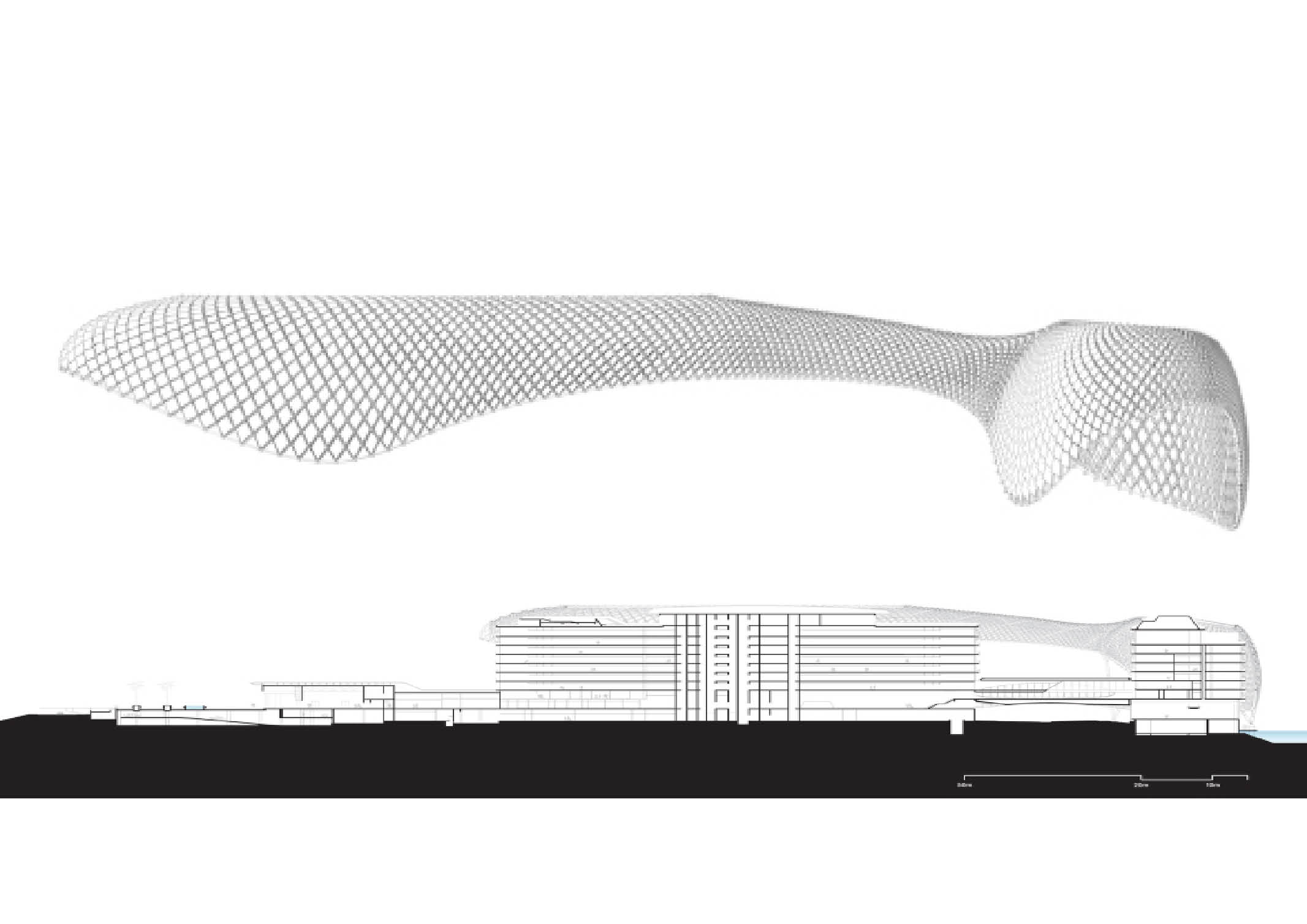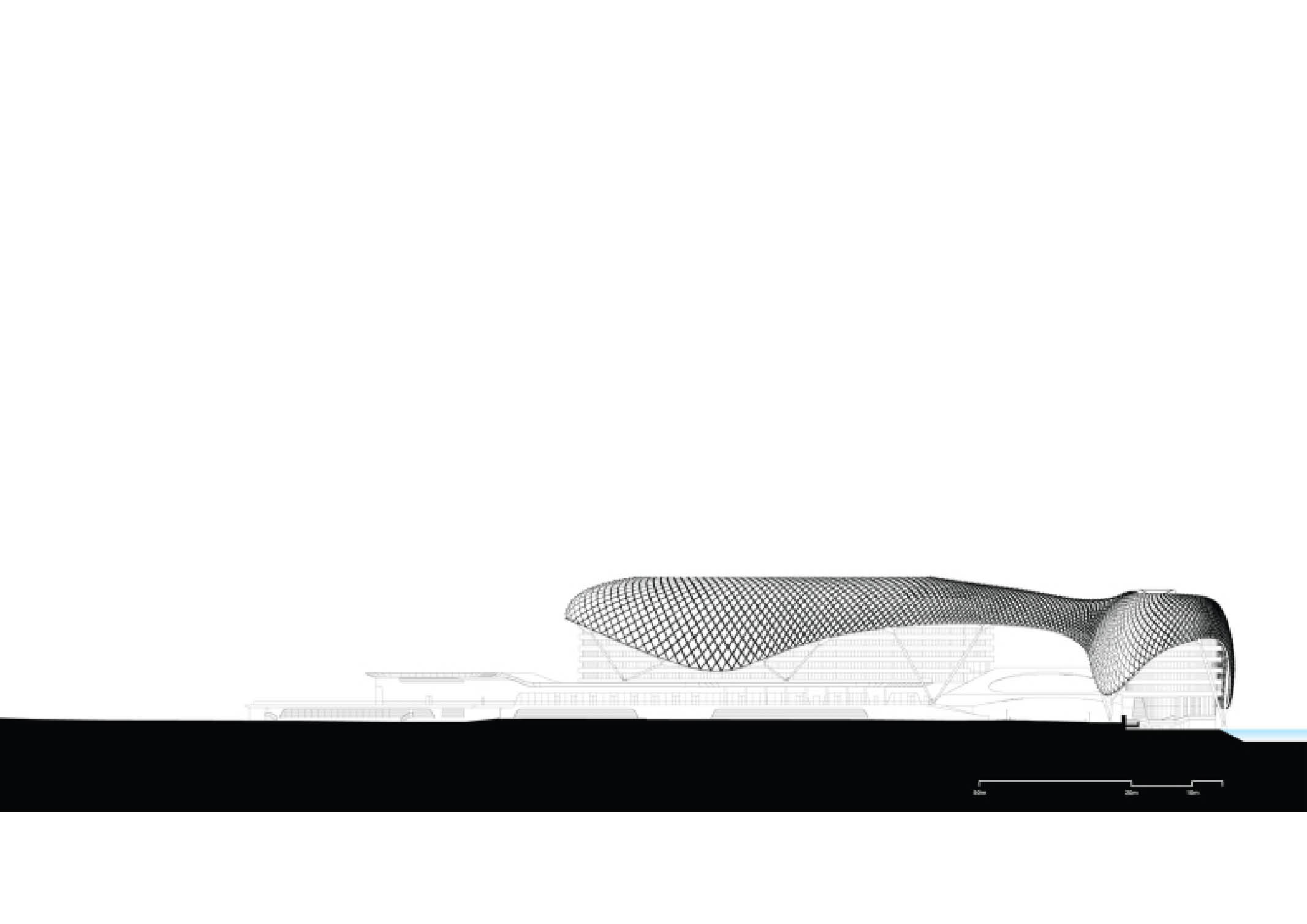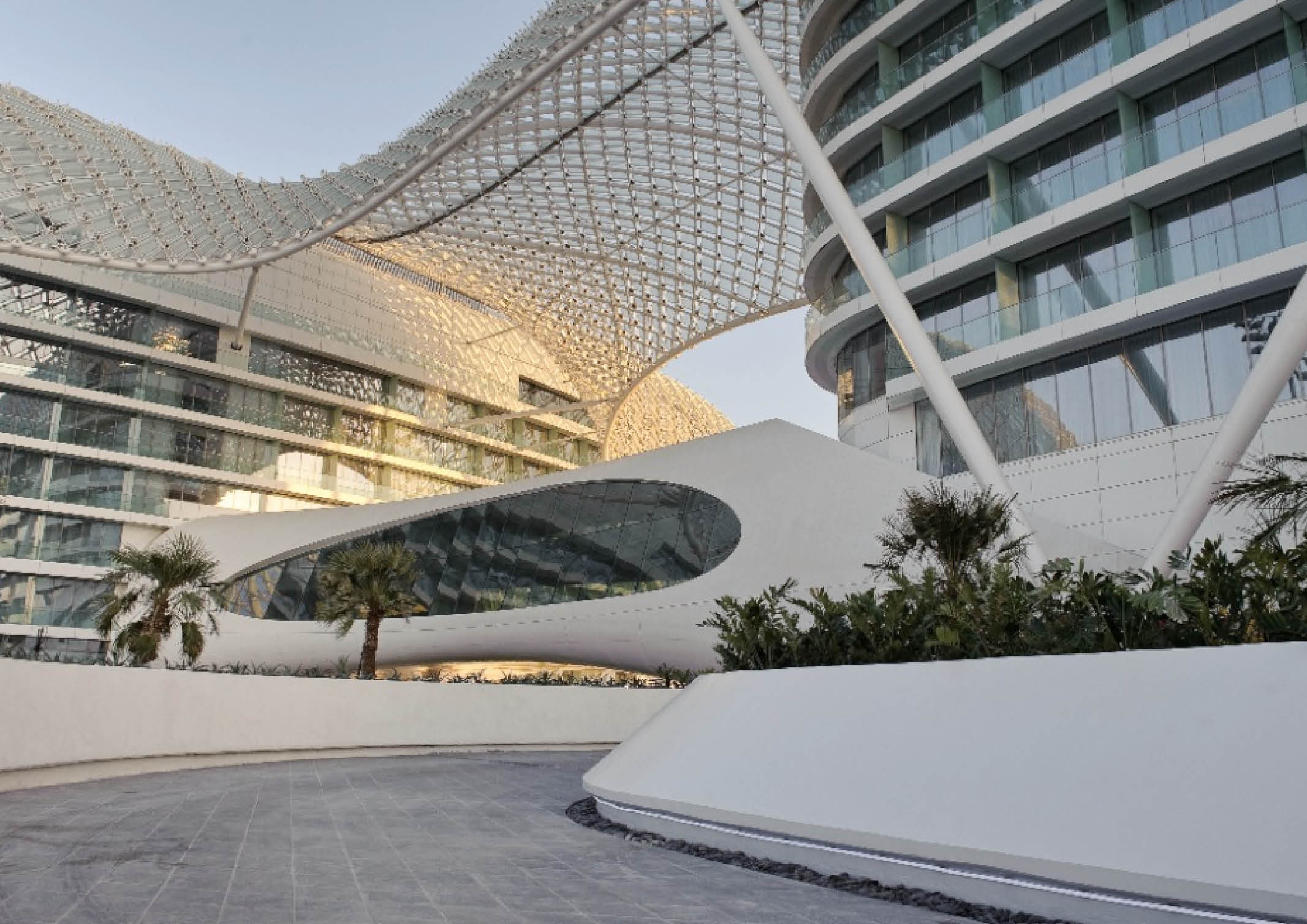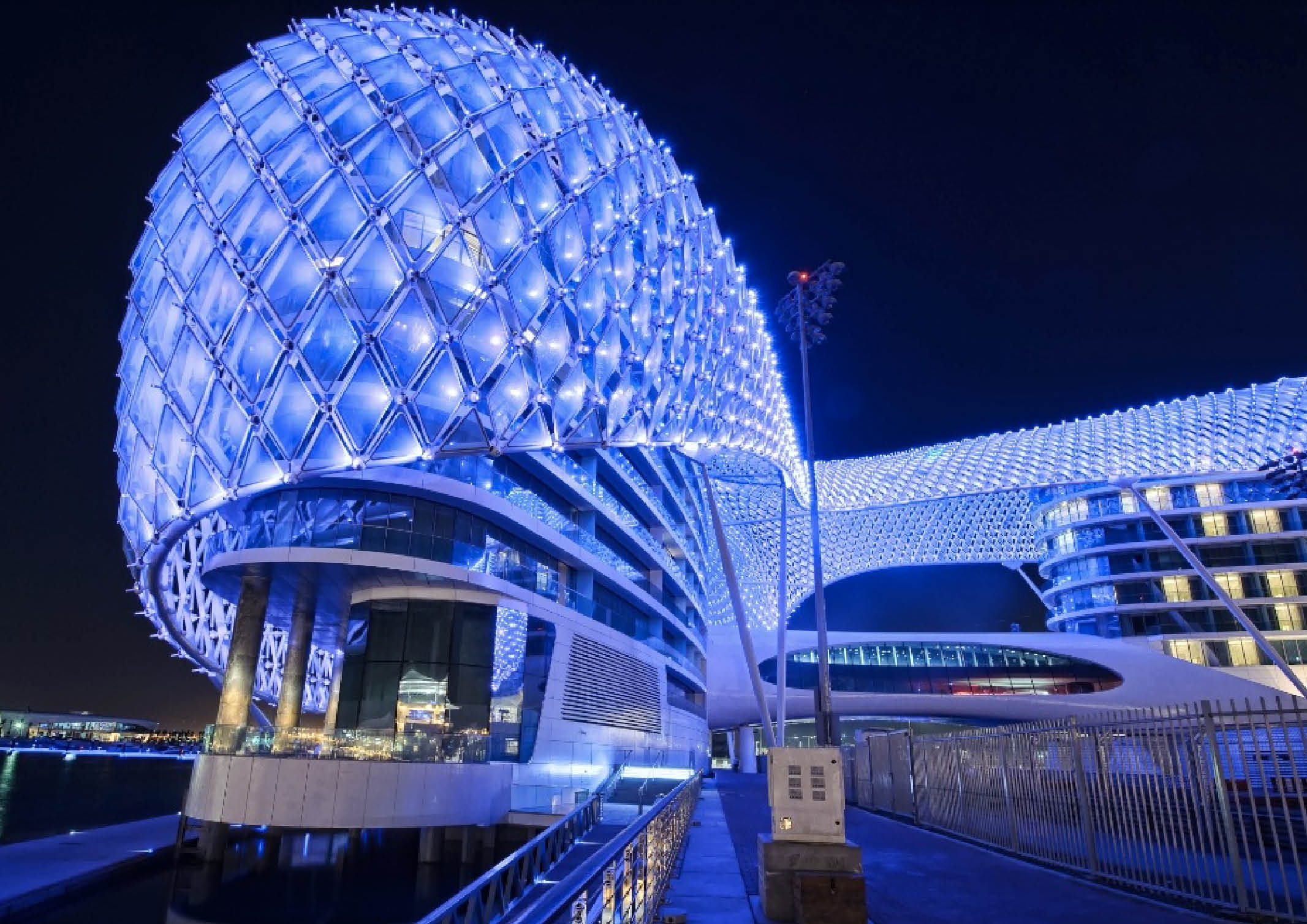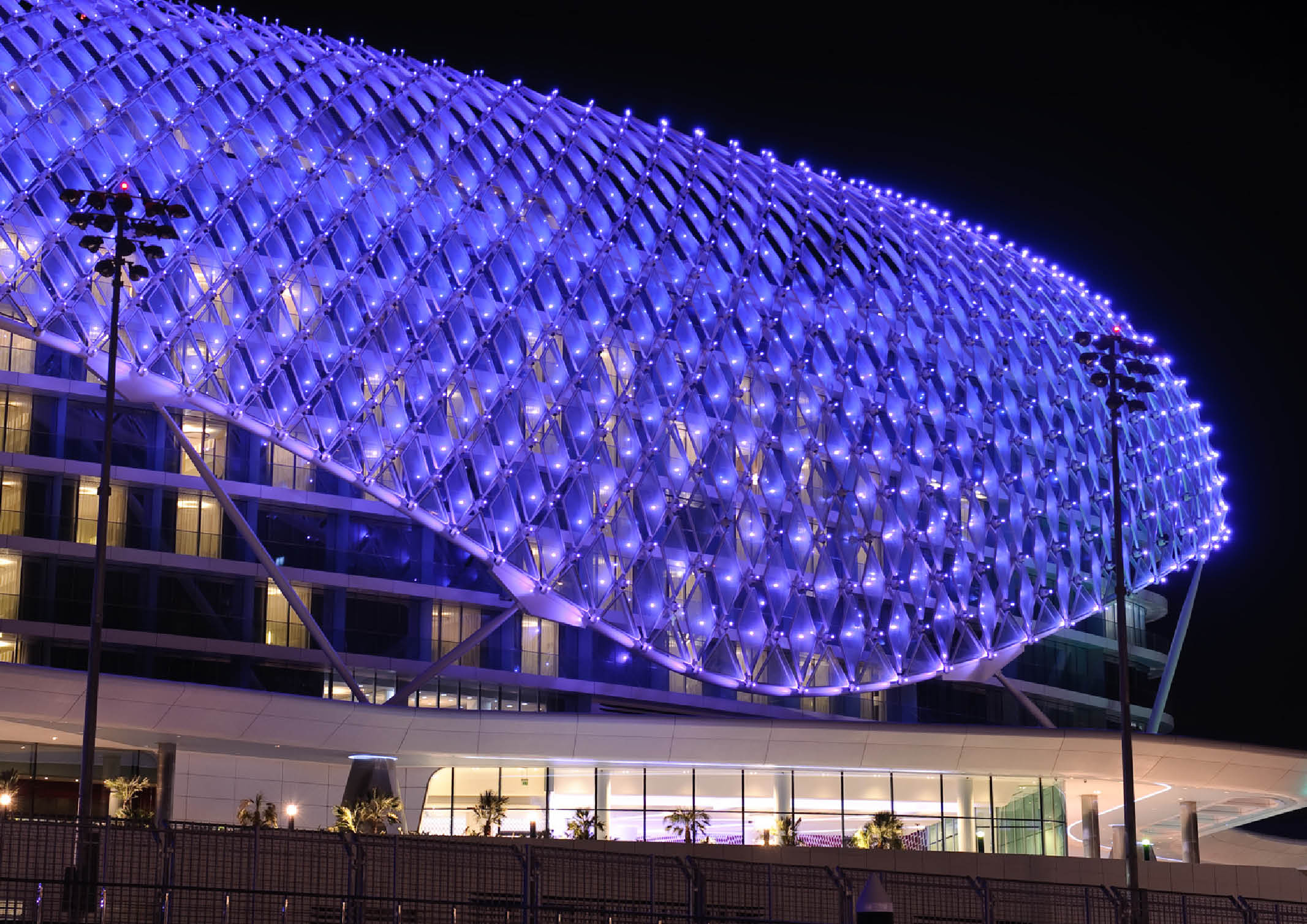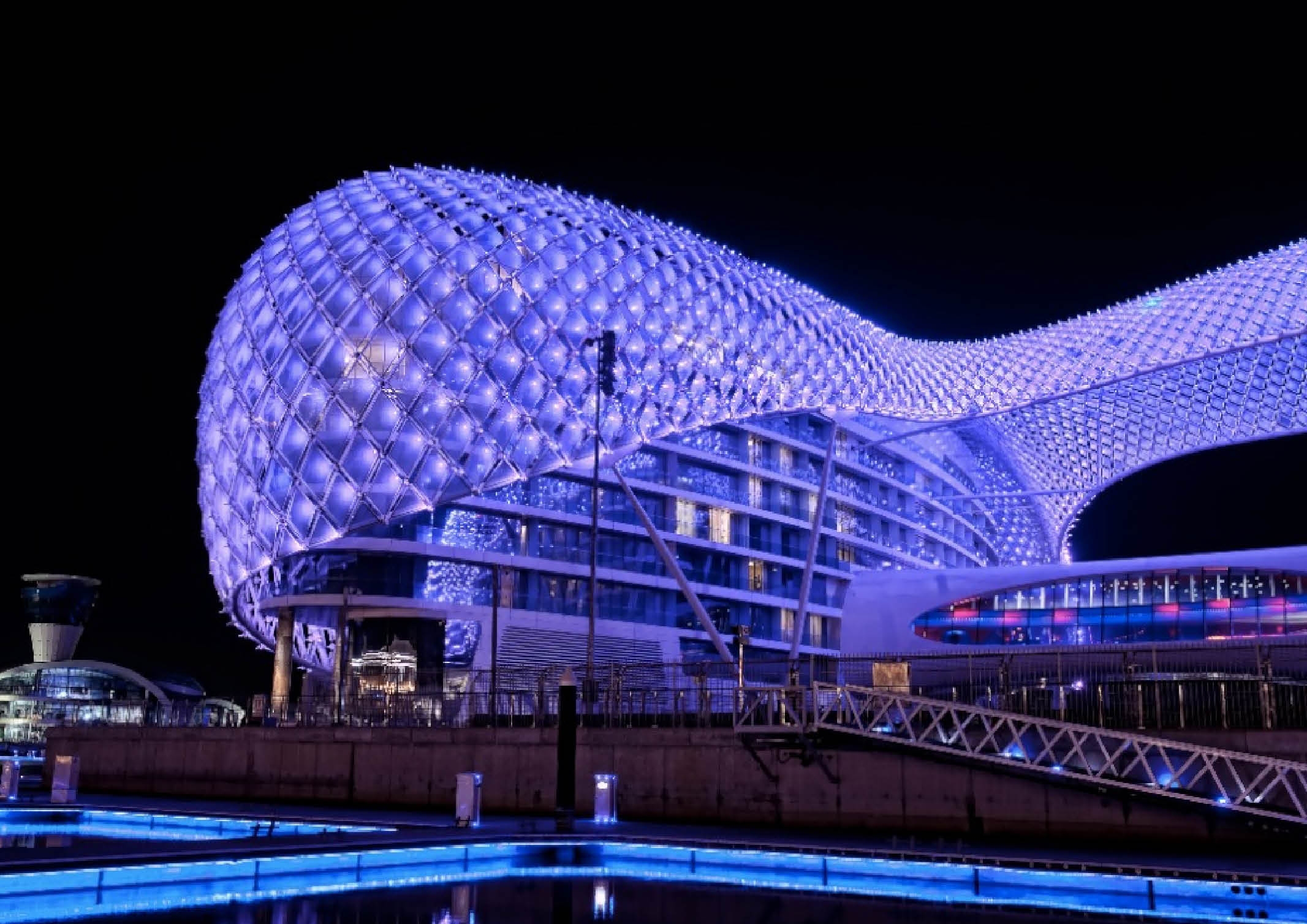
A Building Worthy of a Formula Racetrack
As the capital and second most populated city of the United Arab Emirates, Abu Dhabi has radically transformed in the past decade. In Abu Dhabi, nature has an extensive effect on the landscape and people. The light, temperature and color of the environment, in conjunction with continuous technological advancements and cultural diversity add dynamism to the city. These impressions area translated into the design inspiration for the race track area, reflecting the motorsport theme, to create spaces full of dynamism and energy.
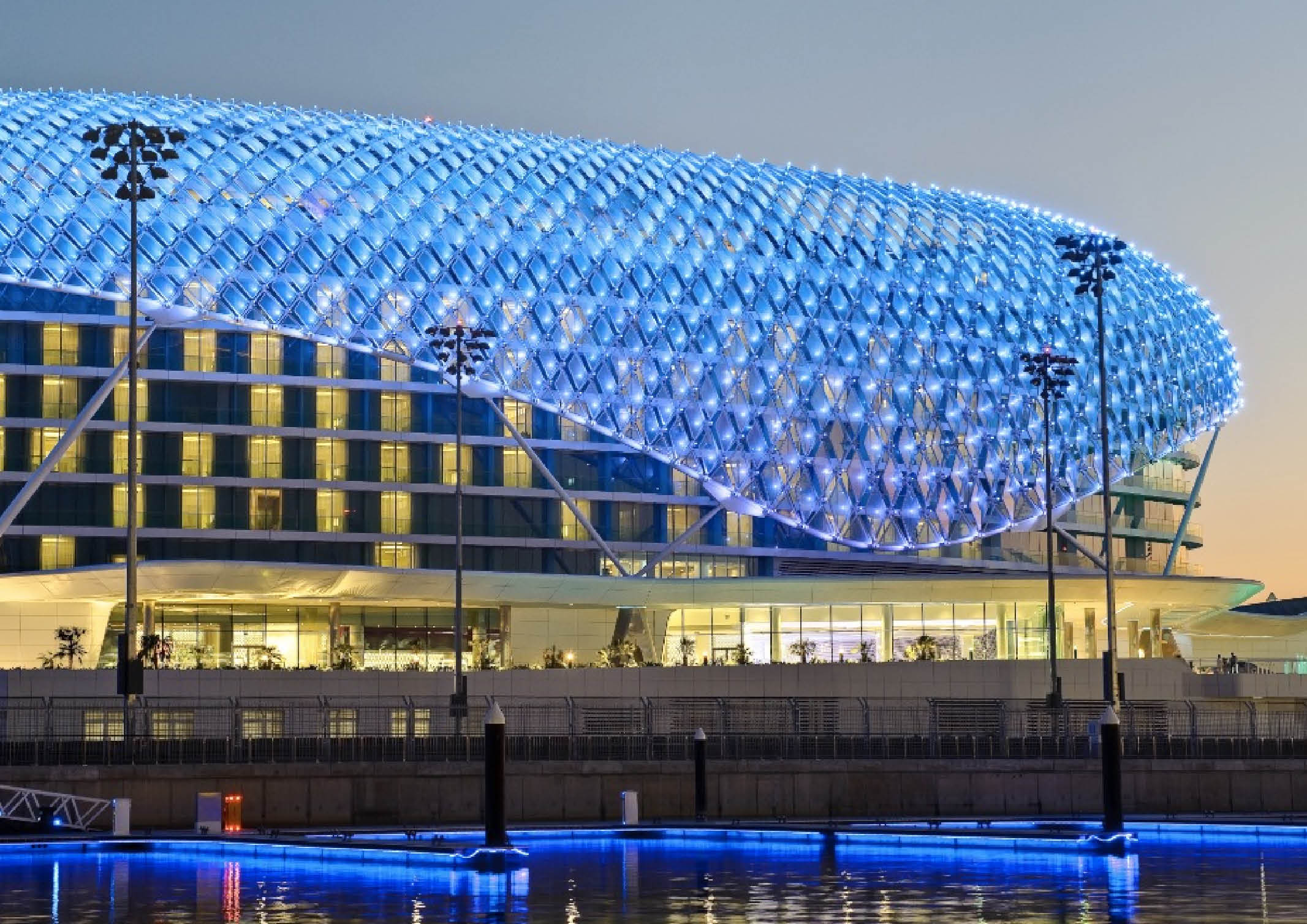
The second Formula One track to be built in the Middle East, following Bahrain, Yas Marina Circuit was designed to be the Middle Eastern version of Monaco. Venue of the inaugural Abu Dhabi Grand Prix, this modern and impressive race track is built on Yas Island about 30 kilometers east of Abu Dhabi’s city center.
The circuit was designed by Herman Tilke, a well-known designer of F1 circuits and a racecar driver himself. Having been completed in 2009, the circuit was first driven by Bruno Senna, with the first organized event being the two-day GP2 Asia test, held the weekend before the first Grand Prix.
Having been constructed on a man-made island, It is believed to be the most expensive circuit in history at a reputed cost of $1 billion. Needless to say, it lacks nothing in terms of facilities. The technologically-advanced circuit features five fully-covered grandstands, a 227-berth marina and the first hotel to have been built over a Formula One circuit. Its twenty-one corners twist through the island off the Abu Dhabi coast, pass by the marina, and continue through the hotel with several long straights and tight corners.
One of the most iconic features of Yas Marina Circuit is the futuristic profile of the W Abu Dhabi – Yas Island Hotel designed by Asymptote Architecture. Of architectural and engineering significance is the main feature of the project, a 217-meter expanse sweeping curvilinear form and a curvaceous roof containing more than 5,300 diamond-shaped steel panels that evoke the tessellated patterns found in traditional Islamic architecture. The characteristic of this development embodies the firm’s pursuit of “technological elegance” — to translate abstract mathematical models into physical structures.
The hotel contains two elliptical towers linked together by a steel and glass bridge, constructed as a monocoque-sculpted object passing above the Formula 1 track that makes its way through the building complex.
The building has two skins: The inner curtain is a conventional acoustic insulation that muffles the roars of the race cars, while the outer “grid shell” breaks the sunlight and generates a stack cooling effect.
At dusk, the grid shell becomes a light source of its own with 5,800 LED luminaires — each containing 144 bulbs— mounted in the vertices of the lattice meshwork. These panels enable the façade to be a medium for sequenced lighting and moving imagery, adding to the racetrack atmosphere and the hotel’s brand image. Frits in the glass panels reflect the light sources outward, balancing the perceptibility without compromising the transparency from within.
This Grid-Shell component envelops the building in an atmospheric-like veil, fusing the entire complex together while providing spectral reflections that play against the surrounding sky, sea and desert landscape.
The architecture as a whole “performs” as both an environmentally responsive solution as well as an architecture of spectacle and event. The entire jewel-like composition responds visually and tectonically to the landscape, thus creating a distinct and powerful sense of place and a breathtaking backdrop to the Formula 1 races.
An architectural landmark embodying key cultural influence and aesthetics, with forms associated with speed, movement and spectacle, The Yas Hotel is designed to be a significant destination on Yas Island for Abu Dhabi and the UAE at large.

Hani Rashid, principal of Asymptote Architecture describes the architecture as:
“A perfect union and harmonious interplay between elegance and spectacle. The search here was inspired by what one could call the ‘art’ and poetics of motor racing, specifically Formula 1, coupled with the making of a place that celebrates Abu Dhabi as a cultural and technological tour de force.”
In addition to Formula One, the circuit has also hosted the short-lived FIA GT1 World Series, rounds of GP2 Asia and the full GP2 Series and overseas rounds of the V8 Supercar Championships, while 2012 saw the creation of a 12 Hour race for GT and sports cars.
Photo credit to Arup, Asymptote Architecture and Bjorn Moerman
